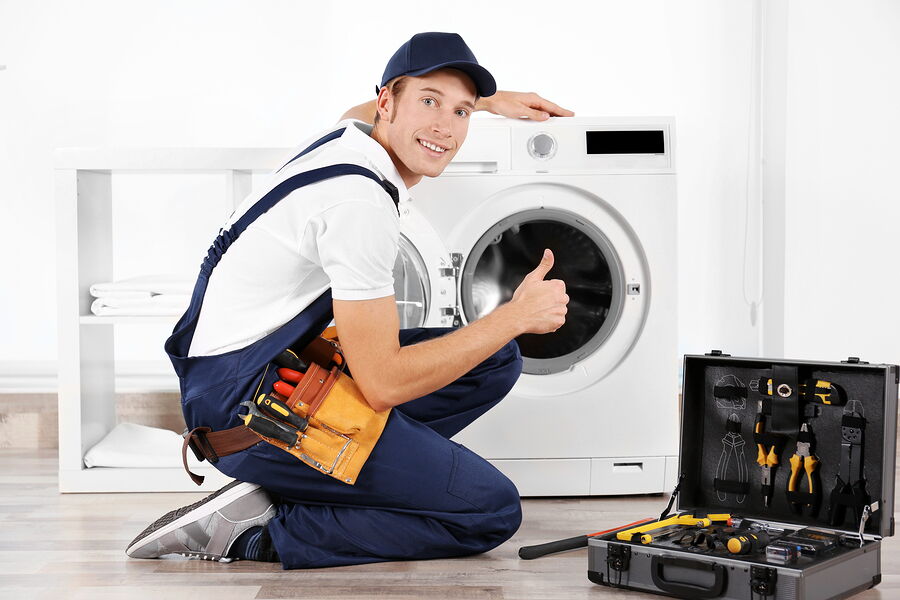The Ultimate Guide to Washing Machine Repair
Washing machines are essential appliances in modern homes. When they malfunction, it can disrupt your daily routine. Understanding common issues and knowing how to repair them can save time and money. This guide will walk you through the basics of washing machine repair, offering step-by-step instructions, tips, and preventative measures.
Common Washing Machine Problems
Washing Machine Won’t Start
One of the most frustrating issues is when the washing machine doesn’t start. This could be due to a variety of reasons:
- Power Supply Problems: Ensure the machine is properly plugged in and the outlet is working.
- Lid Switch: If the lid switch is faulty, the machine won’t start. This can be tested and replaced if necessary.
- Timer Knob: A broken timer knob can prevent the machine from starting. Check if it’s properly aligned and functional.
Washing Machine Doesn’t Spin
If your machine isn’t spinning, it might be due to:
- Unbalanced Load: Ensure the load is evenly distributed.
- Drive Belt: A worn-out drive belt can cause spinning issues. Inspect and replace if needed.
- Motor Coupling: In top-load washers, the motor coupling can wear out. Replacement is usually required.
Water Leakage
Water leakage can damage your home and the machine itself. Common causes include:
- Hoses: Check all hoses for cracks and tight connections.
- Pump: A defective pump can lead to leaks. Inspect the pump and replace if necessary.
- Door Seal: For front-load washers, a damaged door seal can cause leaks. Clean and replace if needed.
Excessive Noise
A noisy washing machine can be disturbing. This may be due to:
- Loose Objects: Check for coins or other objects that may have fallen into the drum.
- Bearings: Worn-out bearings can cause loud noises. This is a more complex repair and might require professional help.
- Shock Absorbers: In front-load washers, broken shock absorbers can create noise. Inspect and replace if needed.
DIY Washing Machine Repair Steps
Unplug the Machine
Before attempting any repair, always unplug the washing machine to avoid electrical hazards.
Identify the Problem
Diagnose the issue by checking the machine’s manual and troubleshooting common problems as listed above.
Gather Tools and Parts
Ensure you have the necessary tools and replacement parts. Common tools include screwdrivers, pliers, and a multimeter.
Follow Safety Precautions
Wear protective gloves and ensure the area around the machine is dry to prevent slips and electrical shocks.
Conduct Repairs
Depending on the diagnosed problem, follow these steps:
- Replacing a Drive Belt: Remove the back panel, locate the drive belt, and replace it with a new one.
- Fixing a Water Leak: Tighten or replace hoses and check the pump and door seal for issues.
- Replacing Bearings: This is more complex and might require professional assistance. Remove the drum and replace the bearings carefully.
Preventative Maintenance Tips
Regular Cleaning
Clean the washing machine regularly to prevent mold and mildew. Use a washing machine cleaner or a mixture of vinegar and baking soda.
Inspect Hoses and Connections
Check hoses and connections periodically for signs of wear and tear. Replace any damaged parts immediately.
Avoid Overloading
Do not overload the washing machine. Follow the manufacturer’s guidelines on load capacity to ensure smooth operation.
Level the Machine
Ensure the washing machine is level to prevent excessive vibration and noise. Adjust the feet if necessary.
When to Call a Professional
While many repairs can be done at home, some issues require professional expertise:
- Electrical Problems: If you suspect an electrical issue, it’s best to call a professional to avoid safety risks.
- Complex Mechanical Repairs: Problems like drum replacement or motor issues should be handled by a qualified technician.
Conclusion
Washing machine repair can seem daunting, but with the right knowledge and tools, many common issues can be fixed at home. Regular maintenance can prevent problems and extend the life of your appliance. When in doubt, don’t hesitate to call a professional to ensure safe and effe


